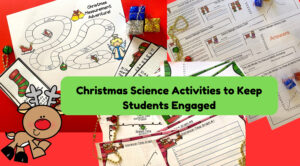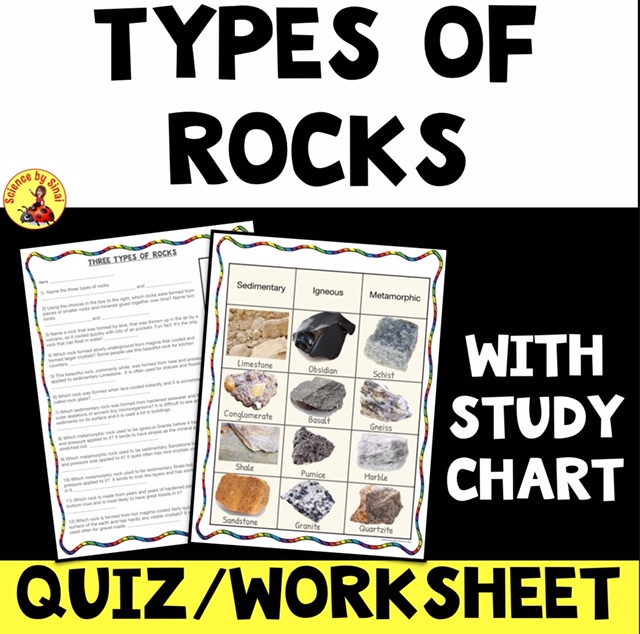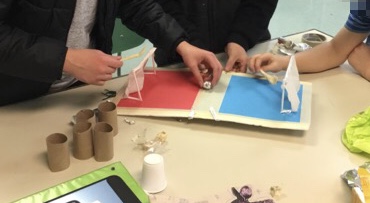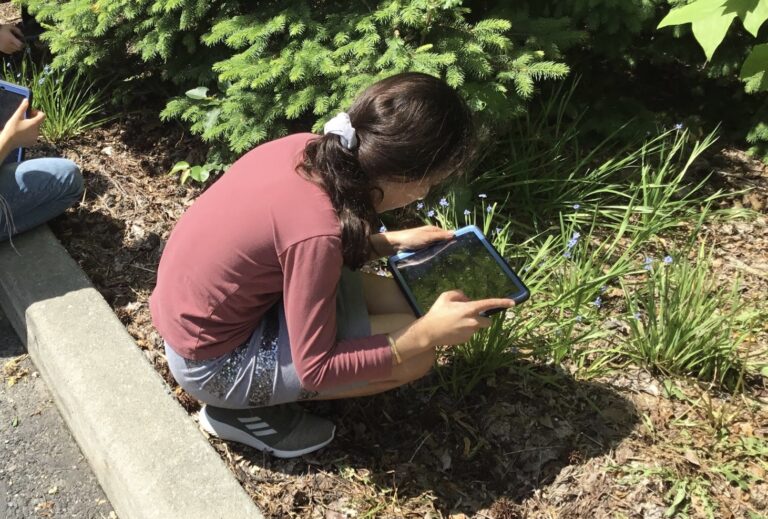Use Backwards Lesson Planning to Create Science Labs
Do you struggle with balancing time during labs and hands-on activities? Have you tried backwards lesson planning to create your science labs?

Use Backwards Lesson Planning to Create Science Labs
Updated February 2024
I have mentioned this method in several of my blog posts, but I thought it would be helpful to focus only on this method to help you get through crazy, loud, chaotic science classes!
What Do You Want Your Students To Take Away From the Lab?
What are you trying to teach the students? Are you teaching a method such as water displacement or finding density? Are you teaching concepts such as elastic versus inelastic collisions? You need to have a clear idea of the reason you’re doing each activity. Make sure that the activity has enough DEPTH and CLARITY to be a worthwhile addition to your unit.
Picture yourself defending every activity that you do each day to a panel of administrators. Yes, that’s terrifying, but it also helps you keep your mission in mind. With everything on social media looking like such fun projects, it’s easy to get swept up into “oh! I want to try that with my students!” without thinking about where it fits in the overall unit.

How Much Time Do You Need For Your End of Class Summary?
You must end an activity with a summary or conclusion, even if it is three to five minutes. Letting students walk out the door, after a rushed clean up, with a “we will summarize next class” call to their retreating backs is NOT effective. This must be budgeted into the class from the beginning.
We can’t assume that the students completely understood the connection between the lab activity and the unit being taught. I have had some pretty unsettling student questions that made me realize that I did a poor job of making that clear!
Letting the students walk out of your classroom with a lack of comprehension, or even worse, misconceptions, defeats the whole purpose of doing the lab.
How Much Time is Needed to Clean Up?
When mentoring new teachers, I have found budgeting clean up time to be the most challenging aspect of hands-on, multimaterial labs. Always OVERESTIMATE the cleanup time and make sure all locations for materials are clearly labeled. Kids in a hurry won’t necessarily ask where something belongs. They just place it anywhere that they think it should go or just leave it on their desks . Locations for materials should be labeled and taught at the front end of the class, not right before cleaning.
How Much Time Is Needed For the Main Activity?
Figure out how long the main activity will take and add on seven more minutes. I’m serious. It will ALWAYS take longer than you think.
Make sure to WRITE the directions for students and, ideally, project them as well. When students ask what to do next, you can simply point it to the paper or the projector.
Try to do the lab yourself ahead of time using only your written directions. Since I sell my lab activities on Teachers Pay Teachers, (Science by Sinai), I try to always test them out on my own students. I have found areas that were vague to the students that I assumed seemed clear! You will find yourself tweaking your directions year to year, which is why a teacher journal is so critical.
I’ve mentioned before that I really like giving the lab instructions the day before the lab for students to read. The difference is significant! I tell students that I will be able to tell who read it and who didn’t by the way they come into the class and get started.
You may think that you don’t need a write up for each activity. However, you will find that giving only verbal directions results in only about half of the students listening. This is a recipe for frustration for both you and your students.
As tedious as it it to write up your activities, there are 3 main benefits:
- You will have it for next year.
- You will address multiple learning styles.
- You will impress any administration that spontaneously observes your class!
Plus, as you are writing out the directions, you are really THINKING through the lab yourself. Resist the temptation to do a “lab on the fly”. Students can pick up lack of organization in a heartbeat!
How Much Time Do You Need to Introduce the Activity?
With the combination of the students reading the directions before the lab, and your verbal instructions, students should understand what they are doing for the activity. You may have a clear idea in YOUR mind, but do your students know how it ties into the concepts you have been teaching? Make sure that your written introduction includes safety precautions and clean up instructions.
How Long Do You Need To Set Up the Materials?
DO NOT, I repeat, DO NOT run around at the beginning of class collecting materials and expect students to sit quietly waiting! It sets an unorganized tone to the class and it will be hard to recover control.
All materials should be gathered either the day before or before your morning classes. Having bins to put everything in for each table is best. Seeing organized bins set up gets the kids excited and focused as well. Make sure you have established the “don’t touch materials until told rule” at the beginning of the year!
How Will You Assess Learning?
Any time that you do a lab, or hands-on activity, it should be followed up with some sort of an assessment of the student’s learning. There are many, many ways to assess students ranging from a simple set of reflection questions to exit tickets to journal writing. You can see some ideas in my blog post called 10 Ways to Assess Students in the Science Classroom.
Conclusion
Backwards lab structure planning has been a lifesaver for me and all of my administrative reviews always mention my “exceptional time management”. That was DEFINITELY not the case when I first started teaching 35+ years ago! If you want to read further about time management in the science classroom, I have a blog post called 10 Tips For Good Time Management in the Science Classroom. I have another one about lesson planning called Planning Lab Activities For Middle School Science Class.











